Sound: 









Value: 









Measurements can be found by clicking this link.
The M4U 8 ($399 USD) might be 2018’s most eagerly awaited new headphones -- PSB’s first new noise-canceling model since the launch of the M4U 2, in 2012. Six years after their release, the M4U 2s remain a benchmark for audiophiles and headphone enthusiasts who want noise-canceling (NC) headphones that sacrifice little or nothing in sound quality. On the opposite end of the NC headphone spectrum are the Bose QC25s: headphones that cancel noise spectacularly well and sound pretty good. While some NC headphones have since approached or matched the M4U 2s’ sound quality and the QC25s’ NC capability and portability, the two models remain the standards of their category.
To the M4U 2s’ winning formula the M4U 8s add a feature that’s far more important in 2018 than it was in 2012: Bluetooth wireless operation. Accordingly, the M4U 8s have volume, play/pause/track skip, and Bluetooth pairing controls, as well as built-in dual microphones for phone calls.
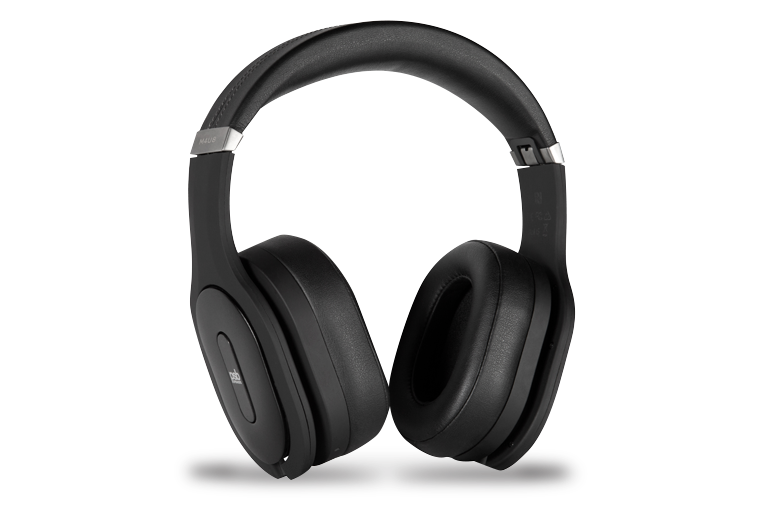
The M4U 8s’ Bluetooth receiver includes aptX-HD compatibility. While my online blind test shows no subjective advantage for standard aptX, aptX-HD’s data rate is 576kbps compared with 352kbps for standard aptX. So aptX-HD may offer better sound than the stock Bluetooth SBC codec -- but you’ll need an aptX-HD-compatible source device to hear it. At present, aptX-HD is available in only a few portable audio players and phones, and is not presently included in Samsung smartphones (though I expect this to change; Samsung’s arch-rival, LG, offers aptX-HD). Apple phones and tablets have never offered aptX of any sort.
All headphones designed by PSB founder and chief engineer Paul Barton incorporate what he calls RoomFeel -- a voicing that, he says, allows headphones to deliver the best approximation of hearing real speakers in a real room. Before designing the M4U 2 headphones, Barton read all the relevant research on headphones and did some of his own; his work was more or less concurrent with the first major research on headphone response curves done at Harman International, and came to similar results.
In the M4U 8s, Barton has mostly stuck with the same formula he used for the M4U 2s. Except for the M4U 8s’ added controls, the two headphones look almost identical. The main difference is in the headband, which is now covered in leatherette and seems to be shaped differently (I didn’t have a pair of M4U 2s on hand to compare). The old band was shrouded in plastic, and I’ve read complaints about the plastic breaking; I assume the change in headband was done to fix this problem.
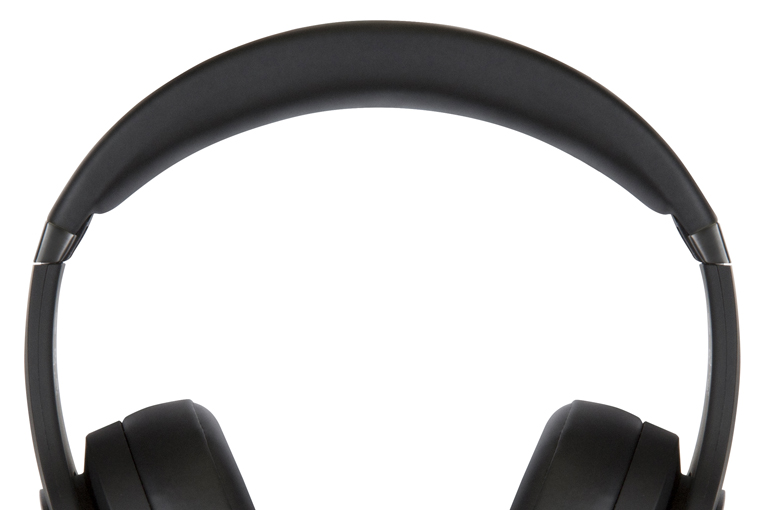
One additional, and welcome, difference is that the M4U 8s are fitted with AAA batteries that can be recharged through a Micro-USB jack; the M4U 2s has no recharging jack for its AAAs, so if you want to use rechargeables, you have to use your own charger, and remove and replace the batteries with every charging cycle. The M4U 8s’ batteries are claimed to provide up to 15 hours of run time -- enough to last through all but the very longest international flights, and of course you can swap in a second set of AAAs if the first set runs down.
As with the M4U 2s, the M4U 8s have a switch that allows them to be run in active mode with or without NC, or in passive mode with the headphones’ power turned off. The same USB connection that charges the batteries can also be used to send digital audio from a source device straight into the headphones, bypassing the source’s headphone amp and one round of analog-to-digital and digital-to-analog conversion.
Let’s see if Paul Barton was able to match the M4U 2s’ sound quality, despite the M4U 8s’ addition of Bluetooth, a rechargeable battery, and three additional controls.
In the box
The M4U 8s come with the same bulbous travel case included with the M4U 2s. A 62” (157cm) cable, terminated at both ends with 3.5mm plugs, is included for use with non-Bluetooth devices. An extra set of earpads is also included, along with a USB charging cable, a 1/4” plug adapter, and a dual-mono adapter for use in airplane seats with old-style headphone jacks.
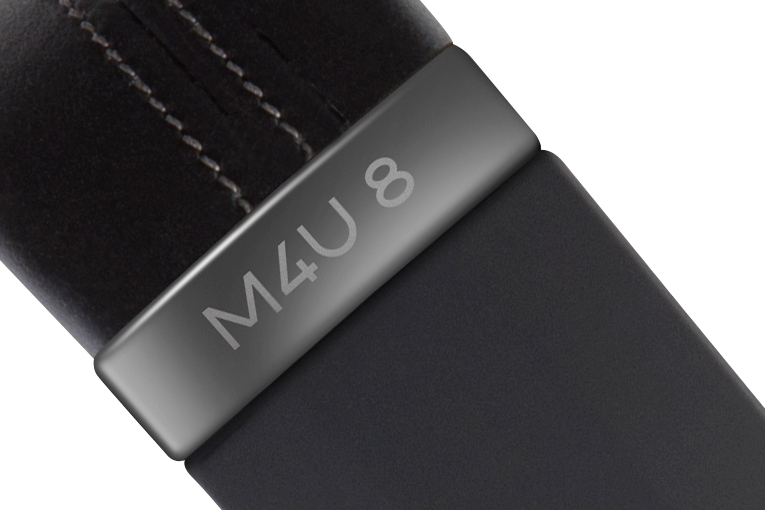
Use
The fact that the M4U 8s are so close to the M4U 2s in design is probably a good thing, acoustically; from a convenience standpoint, it’s a mixed bag. The way the headphones fold up makes them bulky: 2.75” thick when folded vs. 1.5” for my QC25s. I could fit the M4U 8s in my laptop bag as long as I didn’t use the included case, but of course that left them unprotected, and it was a tight fit. I’ve seen travelers with M4U 2 cases hooked on to their rollaboard suitcases, so I know this doesn’t bother some people -- but when I travel, I don’t like having to lug around an extra item.
The M4U 8s also share the M4U 2s’ small earpads. The oval openings to accommodate the outer ears measure just 2.25” by 1.25”, whereas the average ear of a Western male measures about 2.5” by 1.5”. Although the interior of the earpads is angled to make the space larger, for me, the M4U 8s’ ear apertures fall between those of over- and on-ear designs. I can wiggle the headphones around so that my ears are covered by the earpads, but there’s still some uncomfortable pressure on my ears, exacerbated by the headband’s somewhat high clamping force. So while the M4U 8s are more comfortable than some headphones I’ve tested, they’re not my first choice when it comes to long-term comfort.
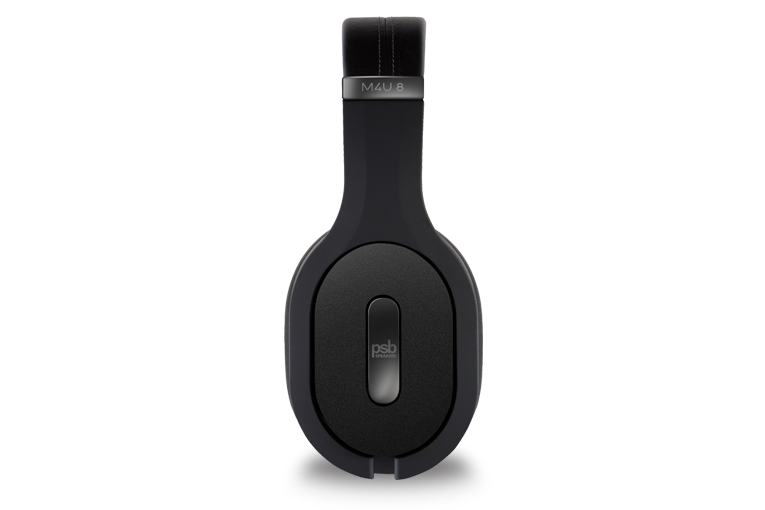
The control layout of the M4U 8s is just about ideal. All controls are on one edge of the right earpiece, suiting the rather instinctive act (for right-handers) of raising the right hand to make adjustments. Once you learn that the play/pause/track-skip rocker is near the bottom of the earpiece and the volume control near the top, it’s easy to find them by feel, with little chance of mistaking one for the other.
One gripe: The M4U 8s don’t shut themselves off automatically after they’ve received no signal for several minutes. If you don’t remember to shut them off, the batteries will run down. You’ll still be able to use the headphones in passive wired mode, but you won’t get NC or Bluetooth.
While listening to Nicky Blitz’s “Why Won’t the Talking Heads Play Coachella?” (single, 320kbps Ogg Vorbis, Artist Partner Group/Spotify) with the M4U 8s wired to my laptop in passive mode, I noticed that the sound at full volume was just loud enough for my taste. In active wired and Bluetooth modes, the headphones played several dB louder.
I didn’t have a chance to fly with the M4U 8s, so to test their NC, I played a recording of airplane noise at 82dB through the four speakers and subwoofer I use to measure NC. The NC was pretty good, but I noticed that, compared with the Bose QC25s, the M4U 8s let through much more noise in the upper bass. However, the M4U 8s didn’t exhibit the uncomfortable “eardrum suck” phenomenon I experience with the QC25s, which feels much like riding a high-speed elevator to the top of a 100-story building -- and is why I rarely use the QC25s.
Sound
I did almost all of my listening to the M4U 8s with NC on, figuring most people will use them this way. There was only a slight difference in sound -- it seemed just a bit brighter -- with NC switched off.
“Hurricane,” from jazz-ish flutist Yukari’s Synchronic (320kbps Ogg Vorbis, QFTF/Spotify), told me immediately that the M4U 8s are at least in the same sonic family as the M4U 2s. This recording, through the M4U 8s, delivered the kind of experience you buy good headphones for. The detail in the drums was stunning. I’m not sure exactly which drums were used; the lower tones sounded like big floor toms loosely tuned, with no damping on the heads (maybe they were small taiko drums), and at one spot it sounded as if drummer Satoshi Takeoshi was banging on the bottom of a saucepan. In all cases, I got an uncanny sense of the real, physical object being struck by a stick in the same room I was in. Yatoshi’s flute sounded natural, neither excessively breathy nor excessively warm. The headphones also conveyed the mellow yet super-clear tone of Thomas Morgan’s double bass without adding any boom or bloat, or any emphasis of the strings clicking on the fingerboard. The sound was wonderfully spacious -- not as big as with open-back headphones, but at least as good as I’ve heard from NC headphones.
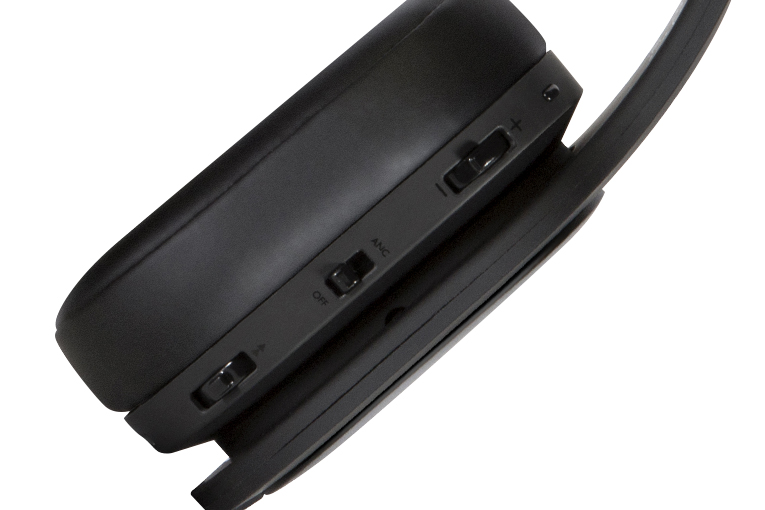
“Houses in Motion,” from the Talking Heads’ Remain in Light (16-bit/44.1kHz WAV, Warner Bros.), also revealed the M4U 8s’ spaciousness, the many instruments in this track each precisely placed at a different distance: the percussion sounds and clavinet were far back, the horns close in, and David Byrne’s voice sounded huge and reverberant, yet quiet and subdued. Most interesting was the call-and-response refrain, which alternates from phrase to phrase between a big, reverberant sound and a dry, close-up sound; the M4U 8s made this distinction dramatic and exciting.
I didn’t have another set of NC Bluetooth headphones on hand to compare with the M4U 8s, but I did have a couple of wired models that made for nonetheless relevant comparisons: the Bose QC25s and the NAD Viso HP50s, which are similar in tuning to the PSB M4U 1s, the passive version of the M4U 2s. With “Houses in Motion,” the QC25s sounded OK but not great; there seemed to be a bit of a cupped-hands effect, as if the music were being played through a short, wide tube. This made the sound less open, and eliminated much of the spatial distinctions in the call-and-response section. The HP50s sounded softer in the treble than the M4U 8s, and while they produced a good sense of space, the softer treble response made the reverberance seem smaller and less dramatic.
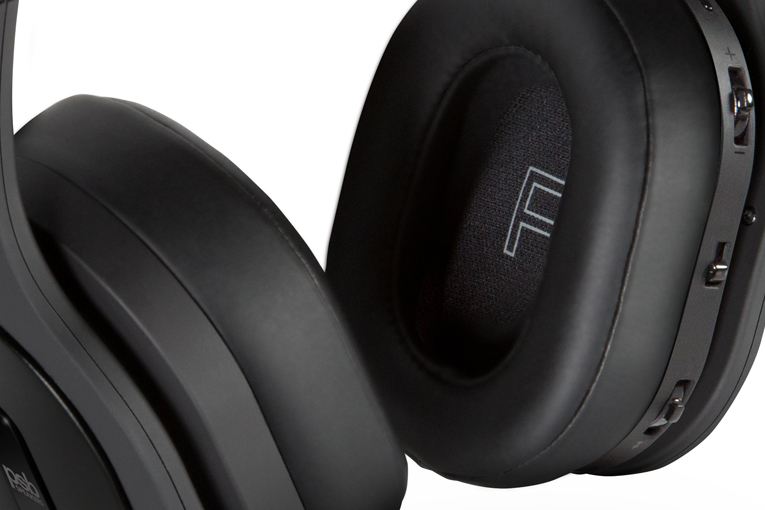
I heard more or less the same character when I put on “66,” featuring Trippie Redd, from Lil Yachty’s Lil Boat 2 (320kbps Ogg Vorbis, Quality Control Music/Spotify). This tune has a classic hip-hop sound: deep-bass hits, ethereal keyboard fills, and the ubiquitous hi-hat sound from a Roland TR-808 drum machine (or a digital sample of one). Although all the headphones sounded pretty good on this, I thought the voices sounded clearer and more detailed through the NAD and PSB headphones. The big difference in this case was the M4U 8s’ extra kick in the treble, which made the voices sound a little brighter and more sizzly.
Going back and forth between the M4U 8s and the Viso HP50s, I couldn’t decide which sound I liked better. With “66,” I preferred the HP50s. But with Joshua Bell and the Academy of St Martin-in-the-Fields’ recording of the Adagio of J.S. Bach’s Violin Concerto No.2 (320kbps Ogg Vorbis, Sony Classics/Spotify), the M4U 8s clearly got closer to a lifelike sound. The instrumental timbres all sounded natural, and I got a great sense of the acoustics of the hall where the music was recorded. Through the HP50s, the sound was fuller but softer, and I lost some of the ambience and the sense of Bell’s bow scraping across his strings.
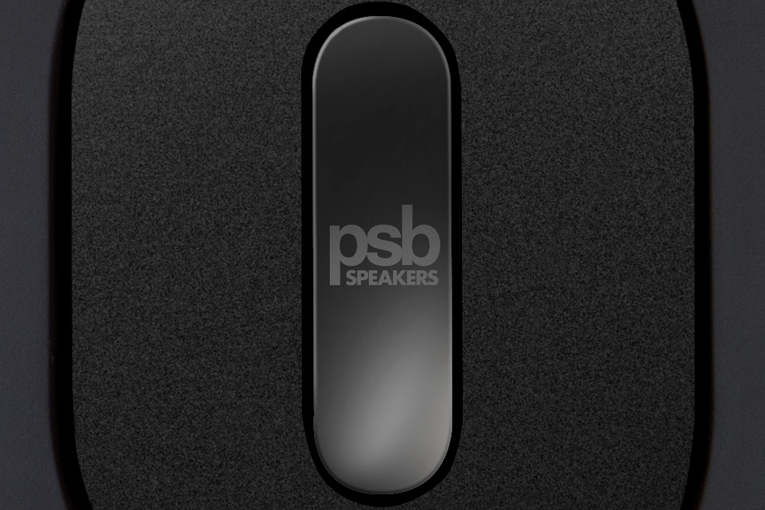
I find the HP50s’ bass to be just to my liking, and close to the realm of reality, while I’ve always found the M4U 2s a bit bassier than I really like. The M4U 8s seemed to be somewhere in between. With “Judas,” from bassist and singer Esperanza Spalding’s Emily’s D+Evolution (256kbps MP3, Concord), the M4U 8’s bass was more prominent than the HP50s’ but seemed to be less flat, with a bit of a response bump in the second octave of bass (40-80Hz). The bass seemed better balanced through the HP50s. Yet the M4U 8s made Spalding’s voice, which sounds a little like Joni Mitchell’s, a bit lispy. Both had a spacious, open soundstage.
Conclusion
The PSB M4U 8s are some of the best-sounding noise-canceling headphones you can buy. Their bit of treble boost makes cymbals, guitars, voices, and snare drums sound a little bright, but that bit of extra treble also creates the subjective impression of more detail and a bigger soundstage. Their NC function is about average, and the feature package is great, but they’re a little bulkier and less comfortable than some competing models.
In the last year or two, we’ve seen the launches of excellent NC Bluetooth headphones from B&O, Samsung, Sennheiser, and Sony. With so much competition, the M4U 8s aren’t the clear standout that the M4U 2s were in 2012 -- but if you find them comfortable and their bulk doesn’t bother you, they’re one of the best choices in their category.
. . . Brent Butterworth
Associated Equipment
- Sources -- Samsung Galaxy S8 smartphone, Lenovo Flex 5-1470 laptop computer
PSB M4U 8 Headphones
Price: $399 USD.
Warranty: Two years, replacement.
PSB Speakers
633 Granite Court
Pickering, Ontario L1W 3K1
Canada
Phone: (905) 831-6555
Website: www.psbspeakers.com





